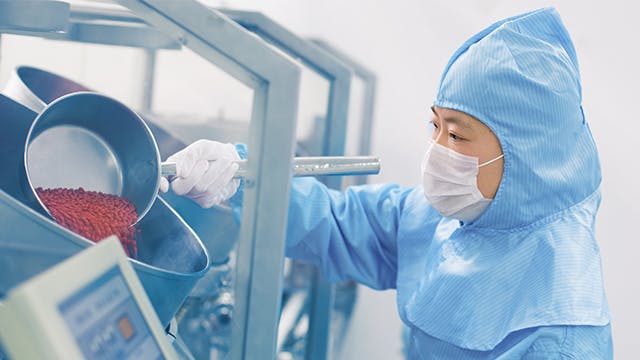Within the pharmaceutical industry, there is a constant drive for innovation and faster time to market, looking to develop new processes, improve the efficiency of existing processes, and quickly move from lab scale to demonstration and commercial scale. When transferring processes between scales, most businesses will need to use an intermediate scale, which may not be perfectly aligned with either the lab-scale process or the envisioned commercial-scale equipment.
Pharmaceutical modelling
To design the most time and cost-efficient production processes, teams around the world leverage computer-aided engineering (CAE) using innovative methods. The key in the scale-up process is to define the effect of the operating parameters and get a deep understanding of their effects. You need to consider the limitations imposed upon you by the process equipment with which you are developing your process. This is where implementing computational fluid dynamics (CFD) and discrete element method (DEM) plays an essential role in pharmaceutical modeling.
Process design in pharmaceutical industry
This is the path the Centre for Process Innovation (CPI) selected to define areas for special attention in process and equipment design, leading to a faster transition to commercial scale.
In this webinar, Kristi Potter and Alex Smith from CPI will present two use cases related to granular powder flow and developing a soft sensor using CFD simulation. Both cases show that modeling can be used to identify and remedy limitations in process equipment that can be used for pharmaceutical applications and a range of other industries.
Learn how CFD simulation and discrete element modeling capability enable companies to validate the appropriateness of new designs prior to fabrication.
Pharmaceutical process engineering
Some of the factors affecting process scale-up along with some of the modeling approaches used to provide insight into the limitations inherent within process equipment include:
- The key considerations of scale-up on equipment geometry
- Effects of process equipment geometry on powder flow
- Meshing techniques used to model complex motions in equipment simulations
- The use of simulation operations to automate tasks
- Identification of the source of unexpected experimental results in a
test rig
Register to watch this webinar and learn more about the value and results achieved by implementing the DEM methodology demonstrated in actual use cases
Meet the speakers
.png?auto=format,compress)
Alex Smith
Head of Process Safety & Engineering

Kristi Potter
Process Engineer

Glenn Longwell
Portfolio Development Executive
Glenn Longwell is responsible for the implementation of the physics based simulation portfolio (Simcenter) in the Pharmaceutical and CPG markets in the U.S. With a BS in Chemical Engineering, Glenn has over 37+ years in the Computer Aided Engineering (CAE) space helping companies implement and gain value from simulation.
